Stackable Sawbenches – Sawyer’s Bench…
The second of the stackable sawbenches was a bit delayed, but that’s what happens with an infant!
As I mentioned in the Design phase, the second and larger of the two sawbenches is based on the sawyer’s bench in Tom Fidgen’s Unplugged Woodshop book. This design is much more feature packed than the $7.17 sawbench, with the ripping notch and slot, reference fence, and vertical legs on one side, but the construction is still relatively simple. Again, to keep the costs down, I’m using dimensional lumber, both douglas fir and southern yellow pine. All total, the cost was less than $20 for 2 2″ x 8″ x 8′, and 1 1″ x 4″ x 6′. The first step, rough cutting, which means… I get to use my new sawbench!
Worked like a charm and soo much easier than sawing on the workbench.
Once everything was cut, I trimmed to size and 4 squared everything. I didn’t worry too much about the length of the pieces because I’ll be flush cutting everything to exact size when it’s all assembled.
The first joinery step is cutting the half lap joints for the leg/stretcher joint.
I used the actual stretchers to mark the joint (no measuring!) and a marking gauge to to mark half the depth. I made a knife wall and used the tenon saw to cut down to the gauge line and chiseled out the waste.
To clean everything up I used the router plane and shoulder plane. The half lap in the stretcher was much easier and was just using the tenon saw to cut half a tenon.
After finessing everything with the shoulder/router plane combo I had a nice tight friction fit.
The tops of the legs have the same basic design as the $7.17 sawbench, so I won’t go over that in too much detail. The only difference is that only one side is angled at 10 degrees, the other is vertical. Remember to save the angled off-cuts for clamping later.
Once the joinery on the legs were cut I glued up the leg sub assemblies.
Now, I used the completed leg assemblies to mark the notches in the two top pieces, again, no measuring.
While the top was unattached it was a good time to mark and cut the v-notch shape as well. Nothing special on the layout, I just grabbed a bottle to mark the circular shape and angled it down to what I thought looked good. After cutting one side I used that as a template for the other side of the top.
And a test fit on the top/leg sub assemblies.
After some more fine tuning I went ahead and glued the leg assemblies to the two top pieces. Just like on the little guy, the angled off cuts are used to create a parallel clamping surface for the clamps.
To keep these leg assemblies together the design calls for aprons and cleats attached underneath to each leg. I cut these to fit by laying out the two assemblies on the bench (the ripping slot width is about 3/4″, I used a clamp width to measure).
I clamped the aprons to the legs, marked and cut, then glued them in place. To keep the spacing in the top I just used a few scrap pieces of 3/4″ stock clamped in between.
The cleats fit in between the pair of legs, and again I just clamped them in place, marked the cut, then glued them in place.
The final piece was the removable reference fence on one side of the top. I drilled a few holes on the top angled side, then used dowel centers to transfer these holes to the fence piece. I’m using 1/4″ dowels.
To add some strength (and looks!) I decided to match the original design and add pegs to all the joints. So, while I was drilling holes I went ahead and drilled these as well. I don’t have any close-up pictures, but you can see the holes here, along with my daughter testing it out!
To give the fence a little decoration I scratched a small bead in it.
This was the first time using the Veritas Beading tool for me and it took some getting used to. The results turned out nice, just a bit tricky to get the hang of.
Finally, I flush cut all the proud ends. It’s looking like a sawbench now!
At this point, I had two perfectly use-able sawbenches. However, I waited until this point to level them, just to make sure they were identical heights. Chris Schwarz wrote up a nice description of doing this here and I followed the exact same process. I even used their mates to make the cuts. I’m on the short side, so my sawbench height is just under 19″.
And that’s it! Two completed sawbenches that are stackable. They are much different designs, but compliment each other nicely. Stacked, even with the top bench’s feet not on the ground, it’s still stable enough to sit on. I’ll do another post on the completed pair and what I like/don’t like about each one, but here is the pair!
- Sawbenches Complete
- Sawbenches Complete Stacked
- Sawbenches Complete
- Sawbenches Complete
- Sawbenches Complete Stacked
- Sawbenches Complete Stacked

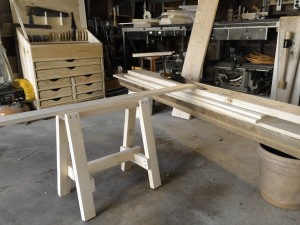
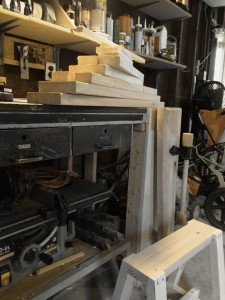
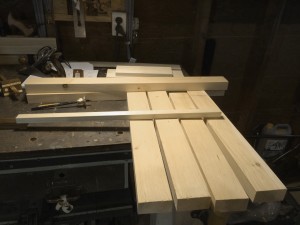
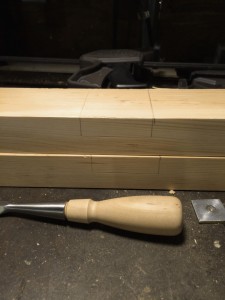
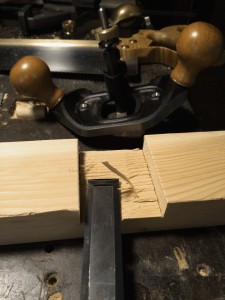
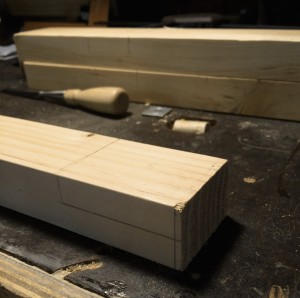
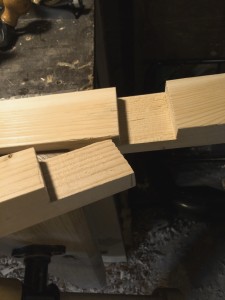
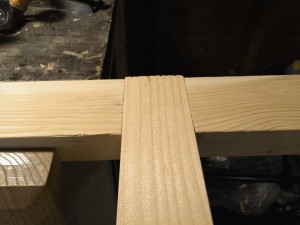
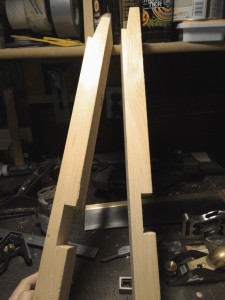
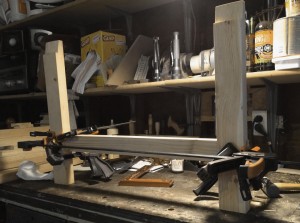
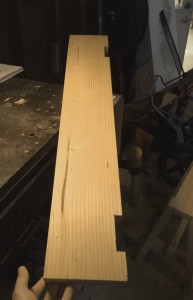
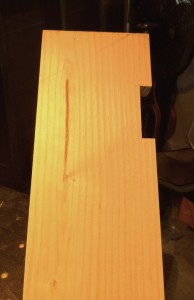
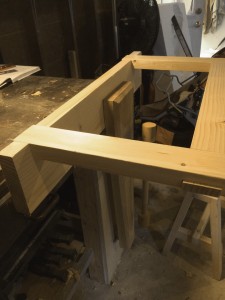
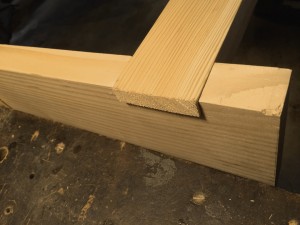
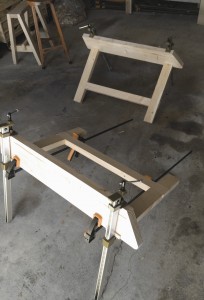
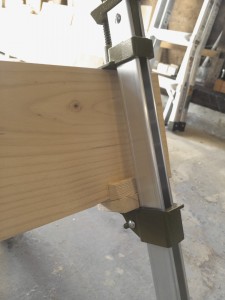
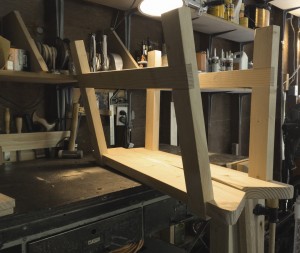
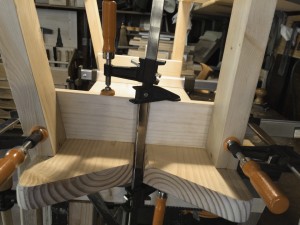
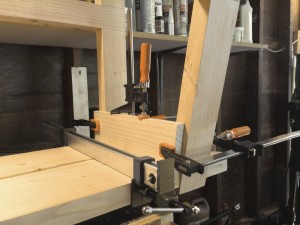
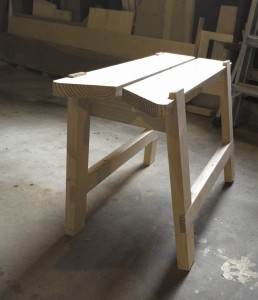
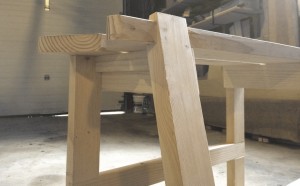
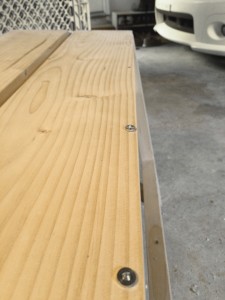
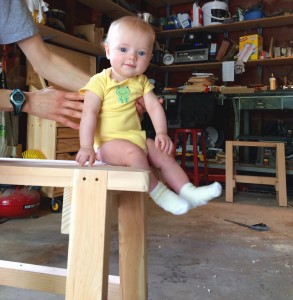
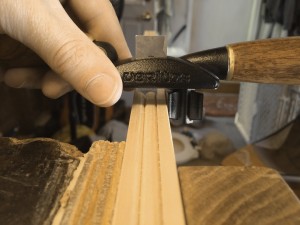
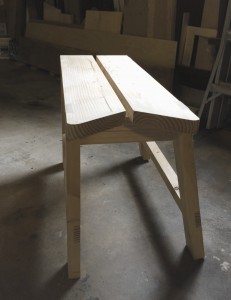
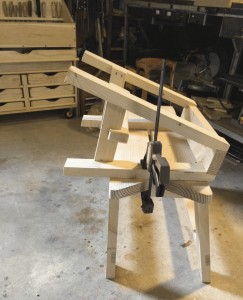
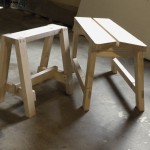
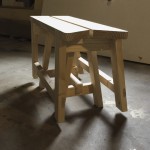
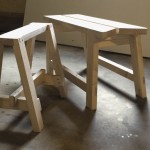
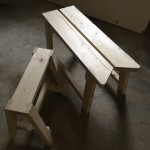
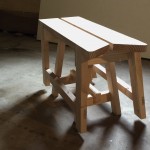
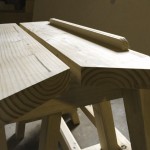
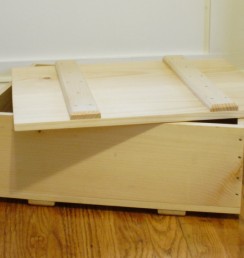
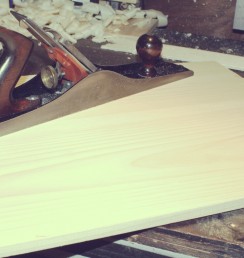
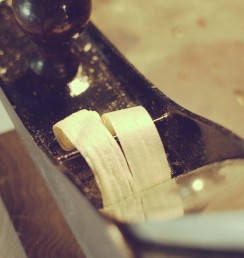
Leave a Reply